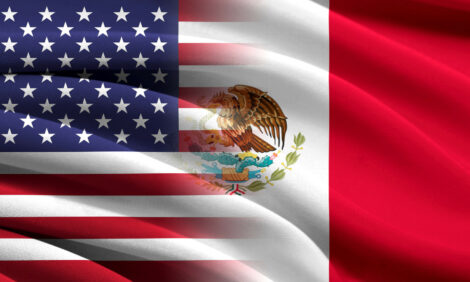U.S. Government Catching Up In Race to Trace Animal Disease
US - The U.S. Department of Agriculture is accelerating a program that will allow investigators to trace a cow back to its birthplace within 48 hours, part of its response to the discovery of a Holstein infected with mad cow disease, reports the Chicago Tribune.
|
Need a Product or service?
|
|
But the private sector and many foreign governments already are far ahead of those efforts.
Spurred by fears of food-borne illnesses and demands from customers to know what is in their food, more companies are developing sophisticated and speedy trace-back systems for everything from hamburgers to pickles. Europe and Japan have passed trace-back laws that require tracking systems for meat and other types of food.
The demands have sparked a cottage industry for what's known as traceability, and the trend promises to expand in the wake of December's discovery of a single case of mad cow disease in Washington state, reports the Tribune.
Traceability systems can be as simple as a metal ear tag or a brand that allows ranchers to keep track of their animals. The most sophisticated systems promise to track animals and grain using microchips, DNA tests, retinal scans and radio frequency tags. They can store information about where an animal was born and raised, what it ate and what kind of medications it received.
For food companies, traceability provides a way to identify and isolate a contamination problem quickly before it turns into a crisis. Traceability systems also allow companies to keep precise tabs on their supply chains and inventories.
"What used to be nice to have is now a must to have," said Paul Cheek, president of Global Technology Resources, a Mississippi-based firm that offers trace-back systems.
The impact for consumers is already evident in Japan, where "traceable T-bones"--the tracking data stored in a bar code on the package--are now available at the supermarket. And in Europe, every cow, pig and sheep is given a document at birth that stays with it until slaughter.
In the U.S., McDonald's Corp. last fall began offering incentives to its beef producers if they could trace back their ground beef. And Wal-Mart Stores Inc. has asked its top 100 suppliers to include radio frequency identification tags on all palettes and cases of merchandise in the next year.
"It's always been a supply-chain logistics tool," said Bruce Peterson, senior vice president at Wal-Mart. "The nice thing about the food security and food safety issue is you don't have to twist arms with suppliers and retailers to get them to understand how important this is."
The merits of a trace-back system have become apparent in the continuing investigation into mad cow disease. USDA investigators were able to quickly track the infected cow from Washington to its birthplace, a dairy farm in Alberta, because of a metal tag that was clipped to its ear before it was exported to the United States.
But while the 80 other cows that were shipped with it also were tagged, officials acknowledge that ranchers routinely remove or replace the Canadian tags once the cows enter the United States. As a result, a lack of records has hampered investigators' efforts to track the other cows. That is important because they may have eaten the same contaminated feed.
For instance, because investigators couldn't positively identify the offspring of the infected cow, the USDA was forced to slaughter an entire herd of 450 calves.
Ron DeHaven, the USDA's chief veterinarian, said it was likely that the department won't locate all the cows from the infected cow's birth herd.
Demand for traceability systems took off in Europe in the wake of the devastating outbreak of mad cow disease in the 1990s. The credibility of the government was badly damaged after authorities withheld information about the dangers of eating infected cows to protect the beef industry.
About 130 people have died since 1995, mostly in England, from the human form of mad cow disease--variant Creutzfeldt-Jakob disease--which is caused by eating brain or spinal tissue from an infected cow.
California-based Jack In The Box restaurants instituted a then-state-of-the-art food safety and traceability system after a 1993 E. coli outbreak sickened more than 700 people and killed four. David Theno, senior vice president of quality and logistics, said the company can use a computer system to trace all of the ingredients in a hamburger immediately after a complaint is made.
"Within no more than an hour, we will have a 1,000-piece jigsaw puzzle with 980 pieces filled in," he said. "There's always 20 pieces you're not going to find."
According to the Chicago Tribune, The USDA has been working with the beef industry for 18 months to come up with a national identification system for cattle. On Thursday, Agriculture Secretary Ann Veneman announced that the Bush administration had set aside $33 million in the 2005 budget to speed up the development of the national identification system.
But ranchers have raised concerns about the privacy of their records, the cost of the program and the legal ramifications of tracking a sick cow to an individual farm.
"I hope we're not creating something for trial lawyer's heaven," said Chandler Keys, vice president of government affairs for the National Cattlemen's Beef Association, which is lobbying for the program to be voluntary. Veneman has said the identification would only work if it were mandatory.
Source: National Pork Producers Council (NPPC) - 3rd February 2004

















